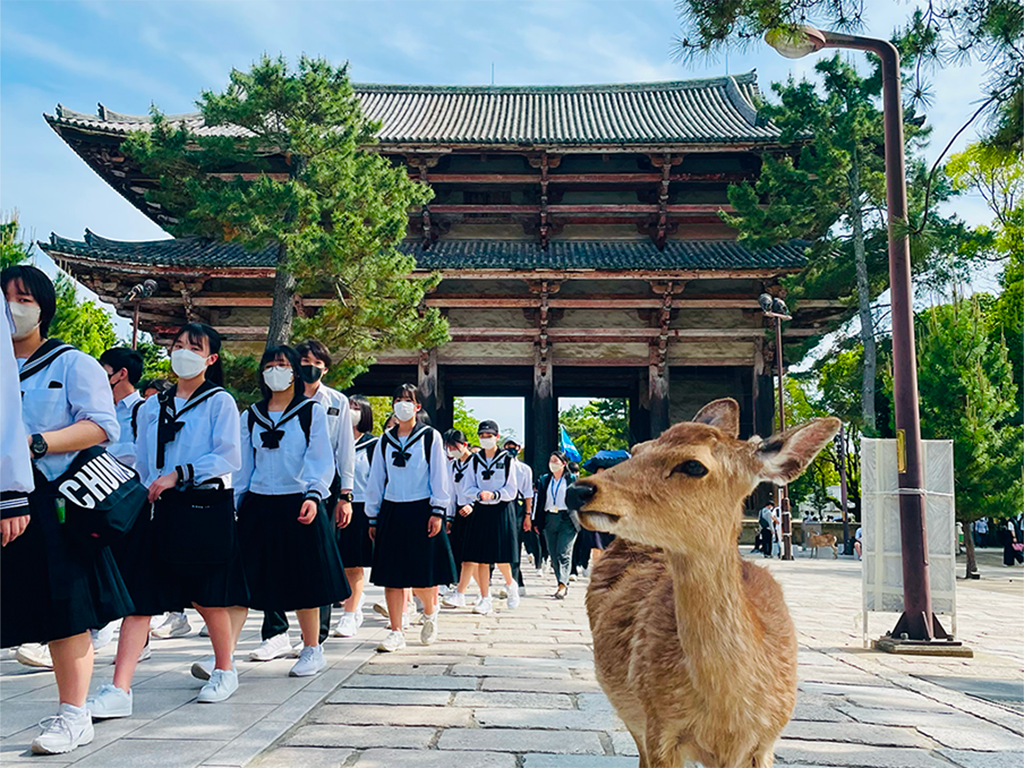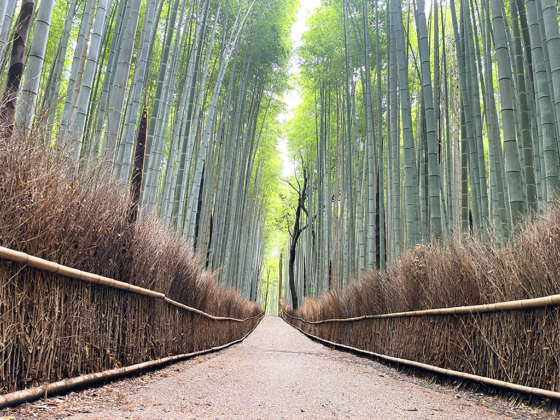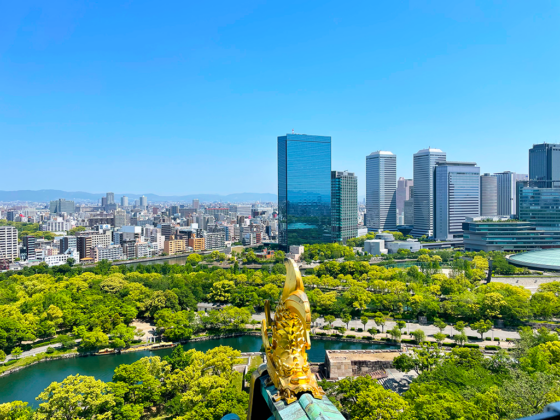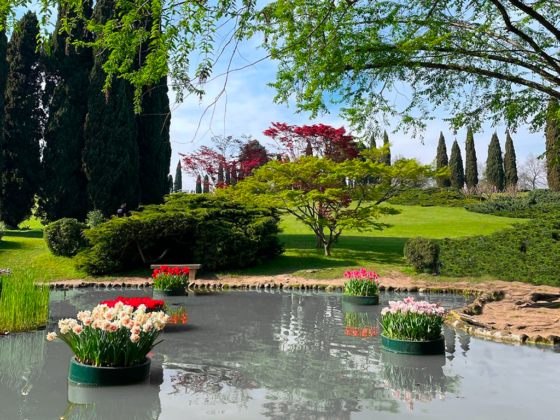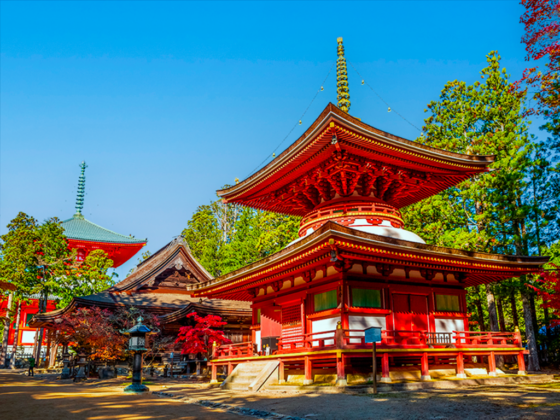Whether from Kyoto or Osaka, on your trip to Japan, a day trip to Nara is not to be missed.
The city is famous for the hundreds of deer that roam freely in a large city park, but it is also home to eight UNESCO World Heritage sites – dating back to the days when it was Japan’s first capital – and one of Japan’s most beautiful Zen gardens and ancient shrines.
This one-day itinerary will help you plan the perfect visit to explore Nara and have time to play with the friendly deer that make this city unique. Get ready for an unforgettable experience!
How to get there
From Kyoto
From Kyoto there are two railway companies, JR and Kintetsu, offering train connections to Nara:
With Japan Railways (JR)
Miyakoji express trains run every 30 minutes between Kyoto Station and JR Nara Station. The one-way journey takes 45 minutes and you can use your Japan Rail Pass. The journey by local trains (which leave twice an hour) costs less and takes 75 minutes.
By Kintetsu Railway
Limited Express trains run twice an hour, taking about 35 minutes from Kyoto Station to Kintetsu Station in Nara. Alternatively, there are direct Express trains that leave every hour and take 45 minutes. The Japan Rail Pass cannot be used on these routes.
From Osaka
There are also two railway companies, JR and Kintetsu, offering connections from Osaka:
With Japan Railways (JR)
Rapid Yamatoji lines operate every hour between Osaka (JR Osaka station) and Nara (JR Nara station), the one-way journey takes 45 minutes. Trains also stop at Osaka’s Tennoji station (30 minutes, 510 yen each way).
By Kintetsu Railway
Limited Express trains take about 30 minutes from Osaka-Namba Station to Kintetsu Nara Station. With Express trains, the journey takes only a few minutes longer, but costs only 680 yen. Trains also stop at Tsuruhashi Station on the JR Osaka Loop Line. The Japan Rail Pass cannot be used on these routes.
Whether you are travelling from Kyoto, Osaka or another city, the advice is to arrive before 10am. One day may be enough to see everything but it is important to have enough time not to see everything in a hurry.
If you are in doubt about whether or not to buy the JRP, read our Practical Travel Tips for Japan.
Detailed itinerary
09:30 – Arrival in Nara
We soon arrive in Nara, at the Kintetsu-Nara station (which is a little closer to the places we will explore today). For those without JPR, it is usually cheaper to take a train to this station.
Tips for Trips: Nara has two main train stations. JR Nara station and Kintetsu-Nara station. If you arrive at JR Nara station, you can start your day by visiting the Tourist Information Centre, located right outside the station, where you can pick up a free brochure with information about the deer park, shrines and temples.
10:00 Kofukuji Temple
We leave the station and head for Kofukuji Temple, one of the eight UNESCO World Heritage sites in Nara. It is famous because it houses the second tallest pagoda in Japan.
Its main areas have free admission, while there are three in particular that require payment of an entrance fee: the Golden Central Hall, the Eastern Golden Hall and Kofukuji’s National Treasure Museum. The original Golden Central Hall was destroyed by fire almost 300 years ago, the current one was rebuilt and opened to the public in 2018. Inside, there is the Yakushi Buddha. On either side are the Southern Octagonal Halls, buildings that date back over a thousand years.
We admired the structure from the outside without paying an entrance fee, because the beauty of this place is just the natural setting of the park (we were tricked by the local deer looking for attention and food!) and the architecture of the imposing central pagoda. Moreover, a full visit would take a lot of time, which with just one day in Nara you won’t have!
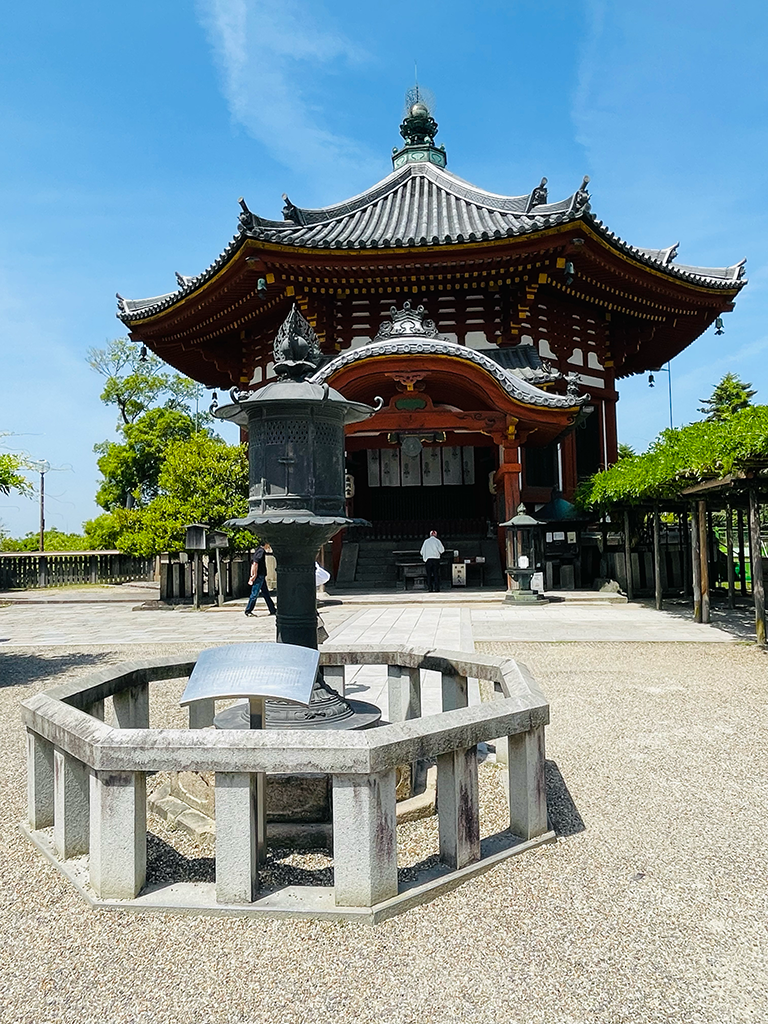
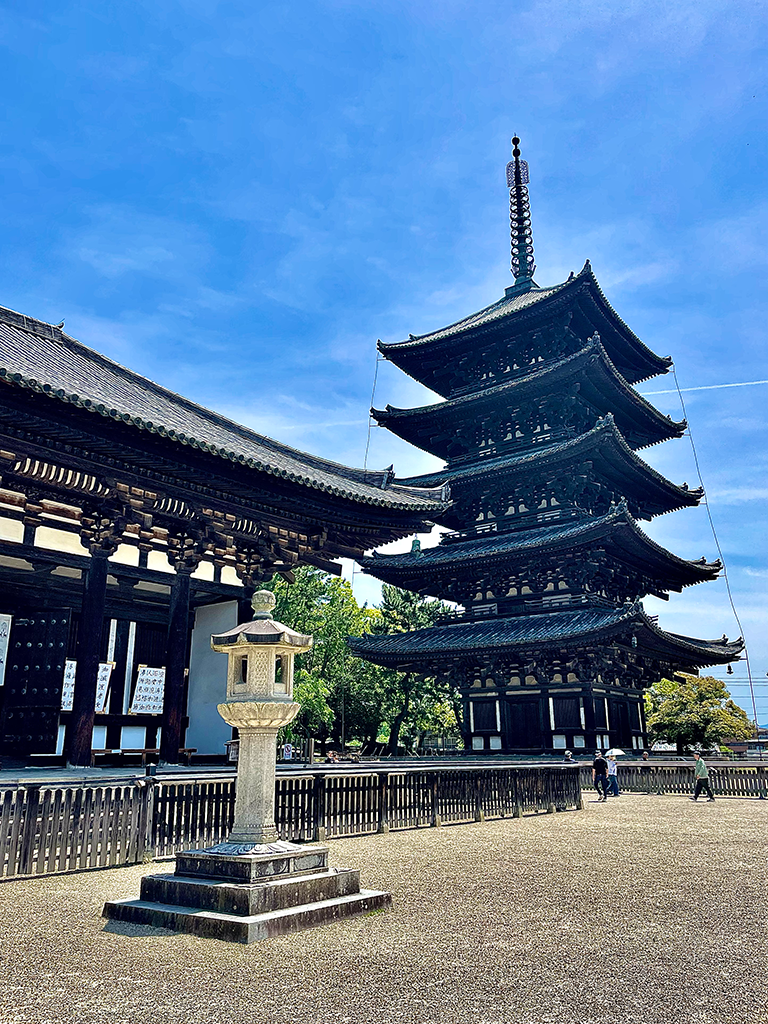
11:45 – Lunch
Nara is always overrun with tourists and places to eat are also taken by storm. We advise you to have lunch very early or very late so that you have human queues to eat.
12:30 – Isuien Garden and Yoshikien Garden
After lunch, we visit Isuien Garden and Yoshikien Garden, two iconic Japanese gardens that cannot go unmentioned on a city itinerary.
The Isuien Garden – ‘garden founded on water’ – is distinguished by its combination of two distinct areas: the front garden, dating back to the 17th century, and the back garden, created in 1899. Here, one can stroll among elegant tea houses and admire landscapes meticulously landscaped to encourage meditation and relaxation.
A few minutes away is the Yoshikien Garden which, although equally beautiful, is less crowded by tourists. The garden consists of three parts: a moss garden, a pond garden and a flower garden for the tea ceremony.
14:00 – Todai-ji Temple
Behind the gardens is the Todai-Ji temple, also listed as a UNESCO World Heritage site, recognised as the largest wooden structure in the world.
The first building one encounters is the Nigatsudo Hall, a beautiful wooden structure offering a perfect panoramic view of the city from its raised terrace.
From one side of the Nigatsudo Hall, a stone path starts and leads in a very scenic short walk to the heart of the temple, the Daibutsu-den Hall of Todai-ji. Inside is a 14-metre high bronze Great Buddha, the largest bronze Buddha statue in Japan.
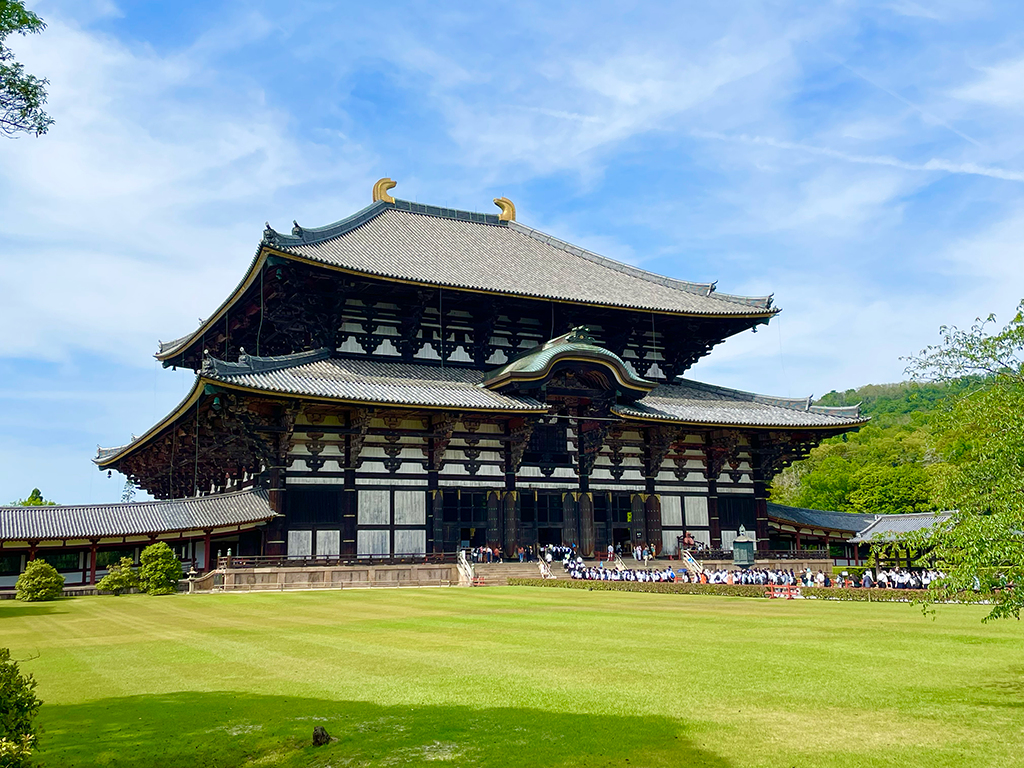
15:30 – Nara Park
We enter the beautiful Nara Park. Established in 1880, it is home to many of Nara’s main attractions, including Todaiji Temple, Kasuga Taisha Shrine and the Nara National Museum.
This free-entry park is also famous because the city’s sacred deer population is concentrated here: more than 1,200 Sika deer roam freely in the park. They are wild animals, but have become accustomed to visitors. They pose for photos, ask for crackers and have even learned to bow to visitors. Be very careful though because they become quite aggressive when they spot food, so don’t wave too many crackers (their favourite food, which you can buy at a stall in the park) or you risk being attacked! I have seen some of the most hilarious scenes at the expense of clueless tourists!
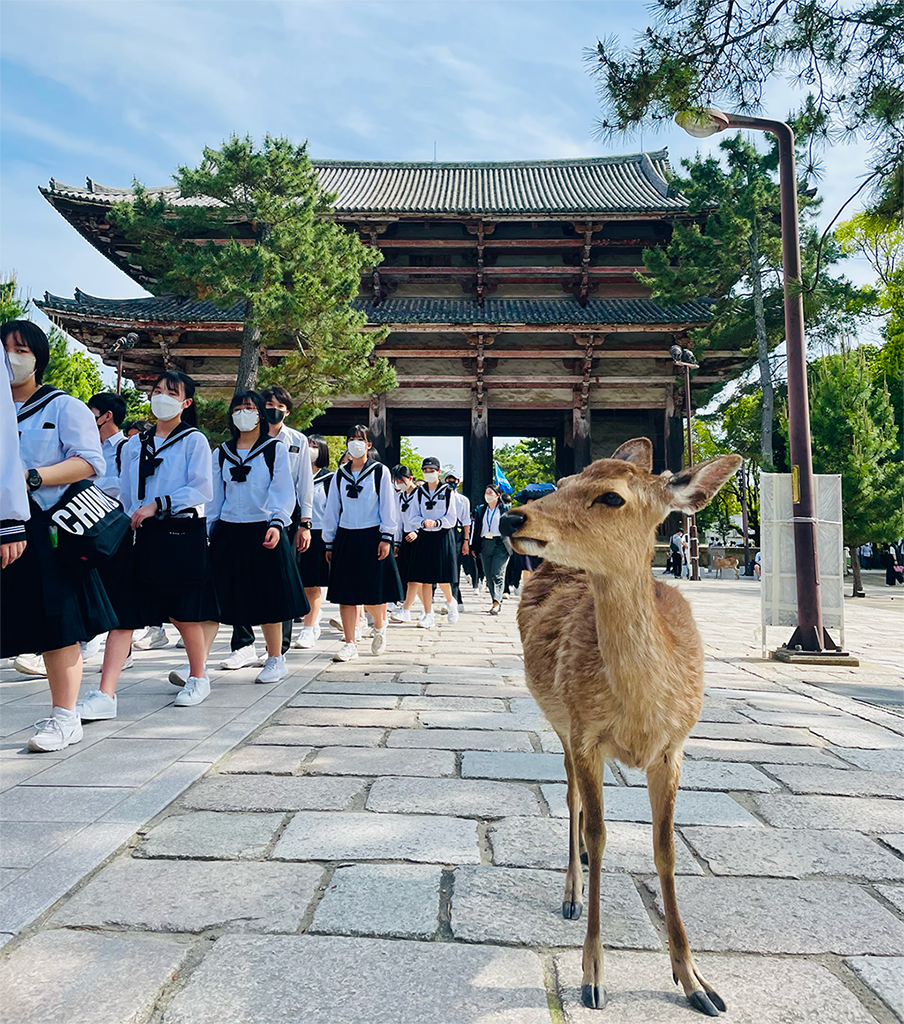
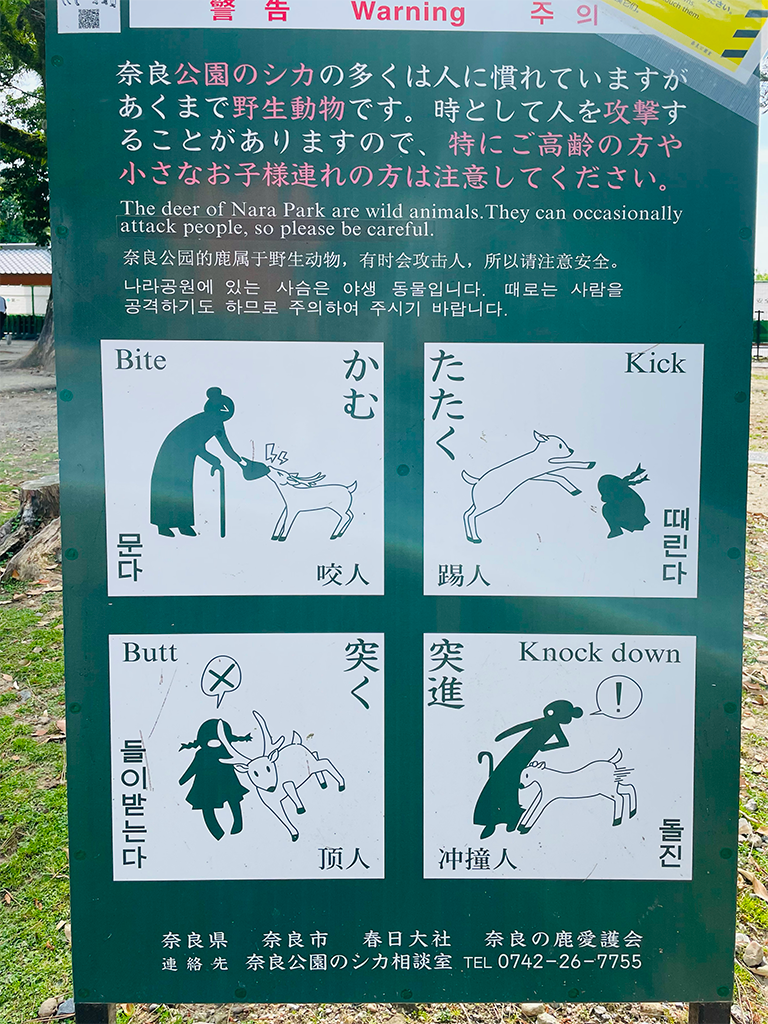
16:00 – Kasuga Thaisha
From the park’s main entrance, we move via a marked path through the forest to the Kasuga Taisha Shinto shrine, one of the most enchanting places in the city, made so special by a dense network of lanterns, paths through the forest trees and the imposing structure with its typical glittering red colour at its heart.
Kasuga Taisha is famous for its 3,000 stone lanterns lining the path to the entrance. This shrine is another of Nara’s eight UNESCO sites. It was built in 768 and rebuilt every 20 years until 1863, in accordance with the Shinto concept of purity.
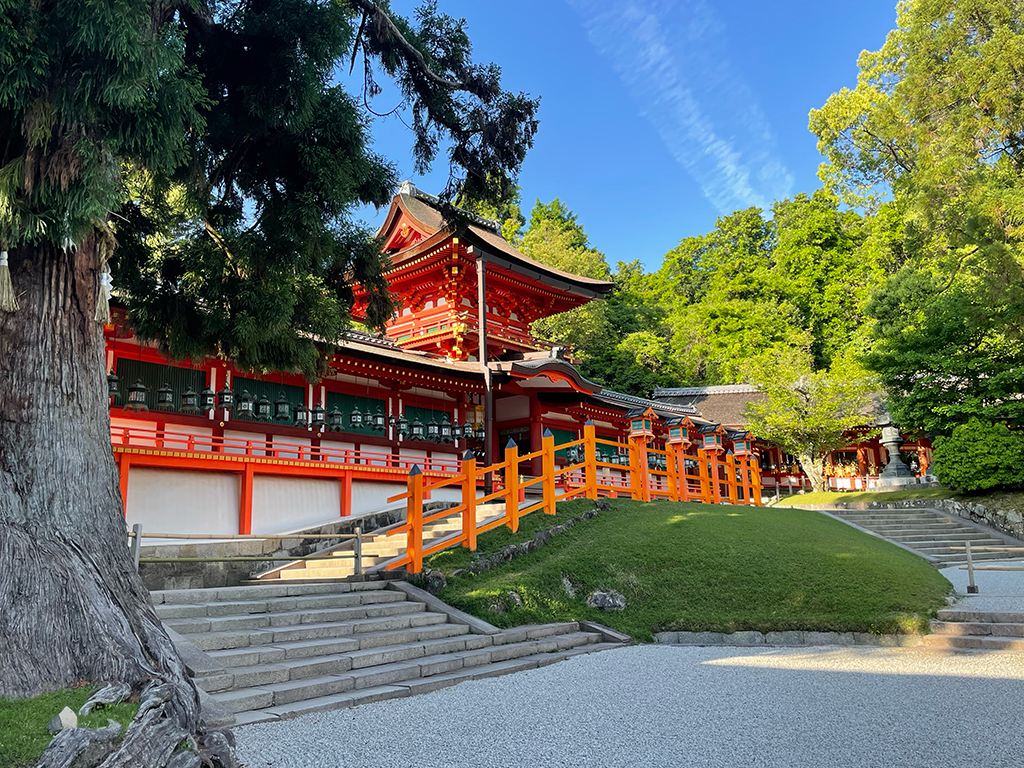
17:00 – Return
On the way back to the station, we wander around Naramachi (the district of Nara) for a while before leaving. The famous Higashimuki Shopping Street is perfect for souvenir shopping! The whole avenue is covered, so it’s a good place to visit at any time. Just make sure you’re here before 6pm as most shops in Nara close early.
***
Now that the article is finished, and that perhaps not everyone made it to the end, we can safely admit it. The tourists attacked, bitten and headbutted by the deer were us. We literally cracked up laughing and lost at least an hour playing with the deer. Sometimes you get to be a little bit of a child again, in our case it happens a lot. I think it was one of the best experiences of our lives!
Last modified: 13 June 2025
